- Rent, Lease, or Purchase
- |
February 5, 2020
20-foot Container Dimensions - Size, Weight, and Capacity
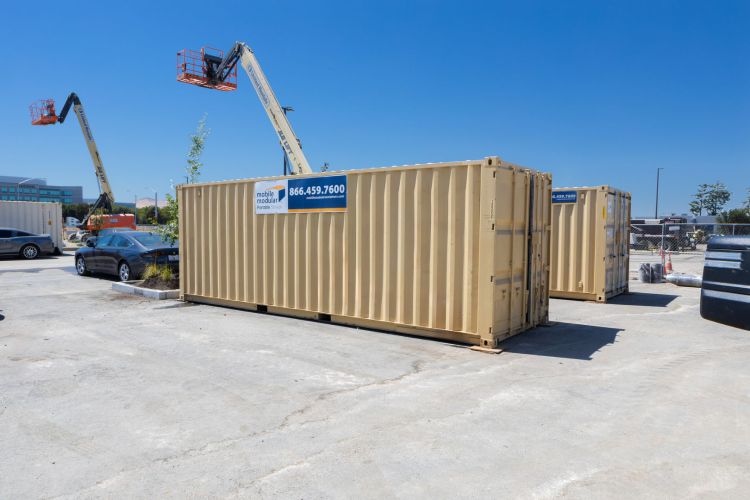
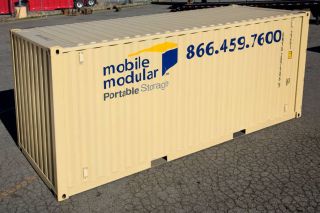
Whenever you're buying or renting a shipping container, it is crucial to select the correct size. You must calculate the cubic capacity of the container and then decide whether the container provides sufficient loadable volume.
If your container doesn't have the required space, you can opt for bigger shipping containers. Alternatively, if the container offers a much higher storage capacity, a smaller container is an ideal way to save money.
This article outlines the dimensions of a 20-foot shipping container to help you understand the storage volume and load that 20-foot units can carry.
Dimensions of a 20-Foot Shipping Container in Feet and Meters
| Exterior Dimensions of a 20-foot Shipping Container | |||
|---|---|---|---|
| Type | Length | Width | Height |
| Standard | 20 ft*. / 6.06 m** | 8 ft. / 2.44 m | 8 ft. 6in. / 2.59 m |
| Internal Dimensions of a 20-foot Shipping Container | |||
| Type | Length | Width | Height |
| Standard | 19 ft. 4in. / 5.89 m | 7 ft. 8in. / 2.33 m | 7 ft. 10 in. / 2.4 m |
in = inch
* ft = feet
** m = meter
Standard shipping containers are the most commonly used containers that come in the following ISO Sizes-10', 20', and 40'.
Here, size refers to the length of the container. For instance, a 20-foot shipping container means that the length of the container and not the cubic capacity is 20 feet.
Exterior dimensions such as the width and height are similar for most shipping containers. But the internal length may slightly vary depending upon the thickness of the steel in its construction. We've listed all the 20 ft. shipping container dimensions in the table below:
Please read our size guide to learn more about shipping container dimensions.
20ft Container Dimensions in Inches, Centimeters, & Millimeters
| Exterior Dimensions of a 20-foot Shipping Container (Inches) | |||
|---|---|---|---|
| Type | Length | Width | Height |
| Standard | 240 in. | 96 in. | 102 in. |
| Interior Dimensions of a 20-foot Shipping Container (Inches) | |||
| Type | Length | Width | Height |
| Standard | 232 in. | 92 in. | 94 in. |
We have also listed the exterior and interior dimensions of 20 ft. shipping containers in inches to help you get a better understanding of shipping container sizes.
| Exterior Dimensions of a 20-foot Shipping Container (Centimeters) | |||
|---|---|---|---|
| Type | Length | Width | Height |
| Standard | 606 cm. | 244 cm. | 259 cm. |
| Interior Dimensions of a 20-foot Shipping Container (Centimeters) | |||
| Type | Length | Width | Height |
| Standard | 589 cm. | 233 cm. | 240 cm. |
Similarly, the standard dimensions of shipping containers in centimeters and millimeters are as follows:
| Exterior Dimensions of a 20-foot Shipping Container (Millimeters) | |||
|---|---|---|---|
| Type | Length | Width | Height |
| Standard | 6060 mm. | 2440 mm. | 2590 mm. |
| Interior Dimensions of a 20-foot Shipping Container (Millimeters) | |||
| Type | Length | Width | Height |
| Standard | 5890 mm. | 2330 mm. | 2400 mm. |
Weight and Volume of 20-Foot Shipping Containers in LBs, KGs, and Tons
Another important consideration while buying or renting a 20-foot shipping container is calculating the container's payload capacity and loadable volume.
Take a look at the table below to learn more about the tare weight, floor space, and storing capacity of a 20 ft. dry-van cargo container:
| Storage Volume of a 20-foot Shipping Container | |||
|---|---|---|---|
| Type | Volume (ft3) | Volume (CBM*) | Floor Space |
| Standard | 1172 ft3 | 33.18 cu. m | 150 ft3 / 23.94 m2 |
| Weight of a 20-foot Shipping Container | |||
| Type | Tare Weight | Max Payload | Max Weight |
| Standard | 4,982 lbs. / 2,259 kg. | 47,928 lbs. / 21,739 kg | 52,910 lbs. / 23,998 kg |
CBM = Cubic Meter
Please note that tare weight refers to the container weight, while payload capacity is the weight of the cargo that it can carry. Total weight of a loaded container = Payload Weight + Tare Weight.
20 ft. Standard Shipping Container vs. 20 ft. High Cube Shipping Container
| 20-foot Standard Container vs. High Cubes: Exterior Dimensions | |||
|---|---|---|---|
| Type | Length | Width | Height |
| Standard | 20 ft*. / 6.096 m** | 8 ft. / 2.44m | 8 ft. 6 in.1 / 2.59m |
| High-Cube | 20 ft. / 6.096 m | 8 ft. / 2.44m | 9 ft. 6 in. / 2.89m |
| 20-foot Standard Container vs. High Cubes: Interior Dimensions | |||
| Type | Length | Width | Height |
| Standard | 19 ft. 4 in. / 5.891 m | 7 ft. 8 in. / 2.33 m | 7 ft. 10 in. / 2.4 m |
| High-Cube | 19 ft. 4 in. / 5.891 m | 7 ft. 8 in. / 2.33 m | 8 ft. 10 in. / 2.7 m |
High-cube containers are special-purpose units that help accommodate taller cargo. They have about 1-foot extra height than standard shipping containers.
The additional height of high-cube containers also slightly increases their storage capacity. Except for the high-cube container’s height, other dimensions remain the same as a standard container.
Let’s compare the sizes, volume, and weight of 20 ft. standard containers and high-cubes.
* ft = feet
** m = meter
1in = inch
| 20-foot Standard Container vs. High Cubes: Storage Volume | |||
|---|---|---|---|
| Type | Volume (ft3) | Volume (CBM*) | Floor Space |
| Standard | 1,172 ft3 | 33.18 cu. m | 150 ft2/ 23.94 m2 |
| High-Cube | 1,316 ft3 | 37.28 cu. m | 150 ft2/ 23.94 m2 |
| 20-foot Standard Container vs. High Cubes: Weight Capacity | |||
| Type | Tare Weight | Max Payload | Max Weight |
| Standard | 4,982 lbs. / 2,259 kg. | 47,928 lbs. / 21,739 kg. | 52,982 lbs. / 23,998 kg. |
| High-Cube | 5,335 lbs. / 2,420 kg. | 61,861 lbs. / 28,060 kg. | 67,196 lbs. / 30,480 kg. |
Source
* ft = feet
** m = meter
1in = inch
How Much Can I Fit in a 20-Foot Shipping Container?
20-foot containers provide about 33 CBM volume, which allows you to easily stack boxes worth 25-28 CBM.

Some areas may be unavailable due to stacking arrangements, access, loading, unloading, and preventing damage to goods during shipments.
If the items you're storing are fragile, you'll have to keep only one tier, as it'll be difficult to stack vertically. Similarly, you must ensure that the volume does not exceed the payload capacity if you're storing heavy cargo.
You can store the following items in 20-foot containers:
- One-bedroom apartment
- 1-2 Cars
- 50 Refrigerators
- 400 Televisions
- 210,191 Tennis Balls
How Many Pallets Can I Fit in 20 Ft. Containers?
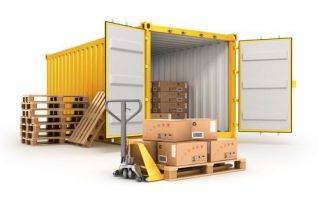
You can load about eight oversized pallets (220 cm./86.6 in. each) or about 16 small pallets in 20 ft. cargo containers.
If you're using the standard Euro Pallets ( 1.2 m x 0.8 m) size, you can stack about 11 such units on the base of 20-foot containers. Alternatively, you can hold ten standard American pallets (1.016 m x 1.219 m, or about 40" x 48" dimension).
How Many CBM Is a 20-Foot Container?
CBM stands for cubic meter, referring to the cubic capacity of the container. We can calculate CBM using the volume formula.
- Measure the internal length, width, and height of the container.
- Convert these units into meters
- Multiply the meter values of length, width, and height to obtain the CBM.

Formula for CBM =Interior (L x W x H)
Let's calculate the cubic meters of 20 ft. containers (length = 19 ft. 4 in., width = 7 ft. 8 in., height = 7 ft. 10 in.). Converting the feet and inches to meter, we get the values as L=5.89 m, W=2.33 m, H = 2.4 m
Using the formula, we get CBM = 5.89 m x 2.33 m x 2.4 m = 33 cu. m / 33 m3 / 33 CBM.
What Types of 20ft Containers Can I Purchase?
You can buy a one-trip or used shipping container. One-trip units are almost as good as new, as they are available for sale after just one round of transporting cargo.
On the other hand, used containers render about 5-10 years of service before they are available for purchase.
While one-trip containers generally have better exteriors than used containers, they can cost twice as much. The price of a container also depends upon the availability, location, delivery charges, customizations, and more.
Therefore, you must carefully evaluate these factors while selecting the right container for your business. If standard shipping containers are inadequate for your cargo, you can also use these special-purpose containers.
High-Cube Containers
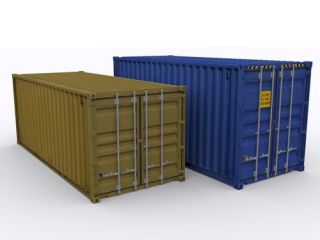
A high-cube unit offers about 1 ft./ 0.4 m additional height, making it perfect for tall items like pipes, machinery, and vehicles.
Double-Door Containers
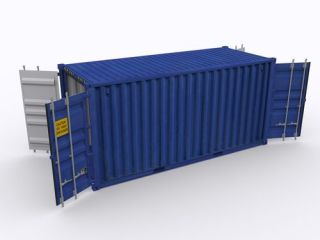
Double-door units have a door opening on either end, allowing more accessibility and convenience during loading and unloading goods.
Flat Rack Containers
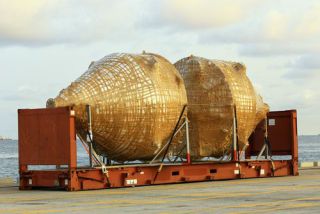
Flat-racks have no walls on the sides, and collapsible walls at the ends, making them ideal for shipping oversized cargo with irregular sizes.
Conclusion
While buying or renting a 20 ft. shipping container, you must estimate its size and storing capacity. Calculating the dimensions and CBM can help you estimate the amount of cargo you can store and whether the container is suitable for your needs or not.
Mobile Modular Portable Storage is a leading supplier for different types of containers, such as the high-cube and double door opening. Select a product on our site, and request a quote. Or get in touch with us at 866-459-7600, and our representatives will help you choose the shipping containers that best fit your application and budget.
Related Blogs
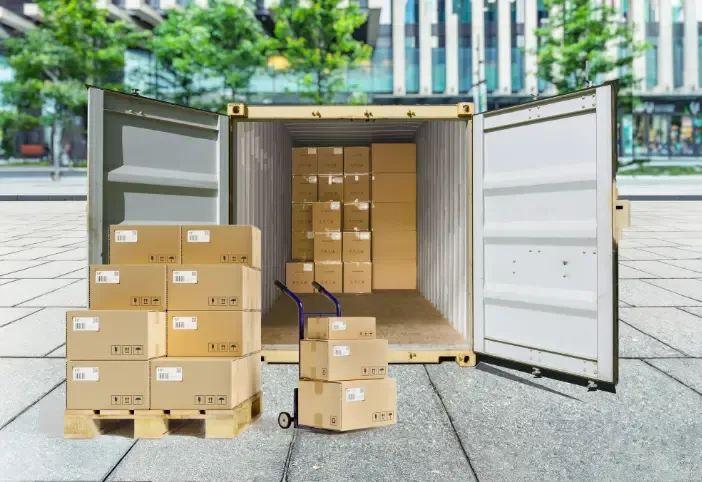
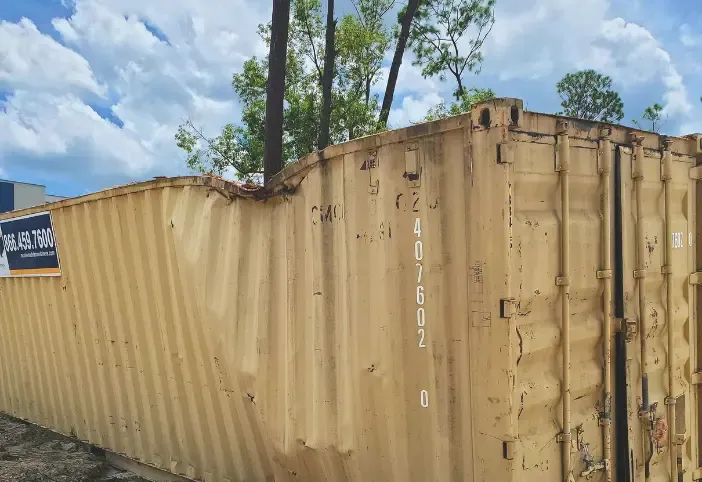
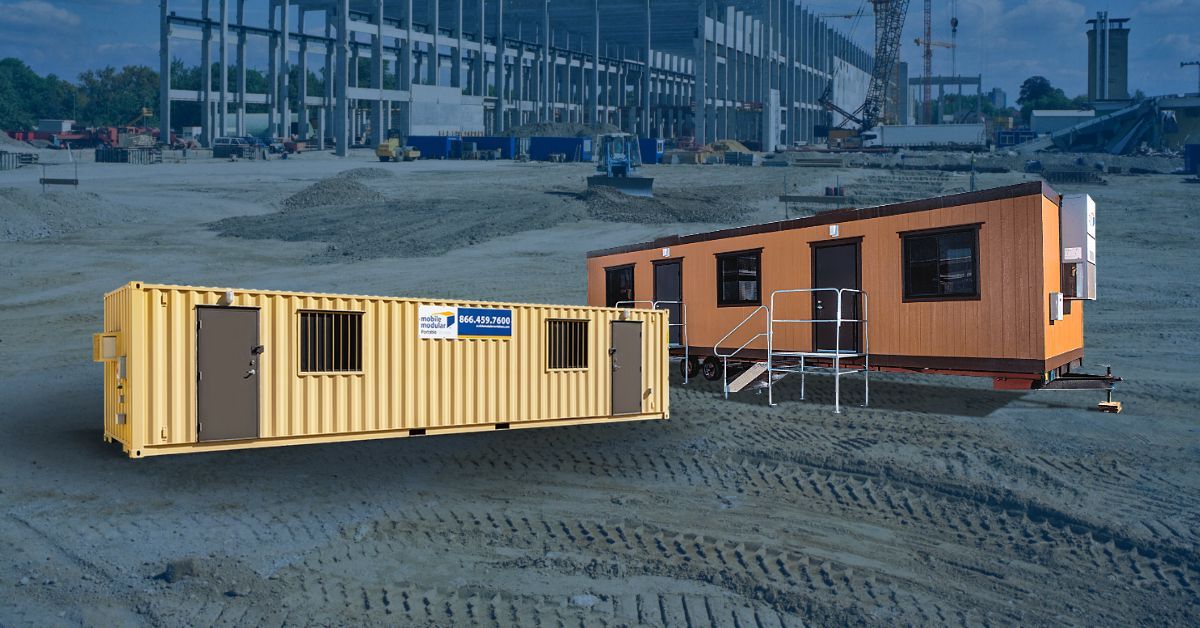
Subscribe to Our Blog
Enter your email address to subscribe to the blog and receive the notification of new posts by email.
Thank You for Subscribing to Our Blog!
Stay tuned for upcoming emails with valuable content that we hope will enhance your experience with our brand.
Both Pardot and mg360 form submissions failed.
